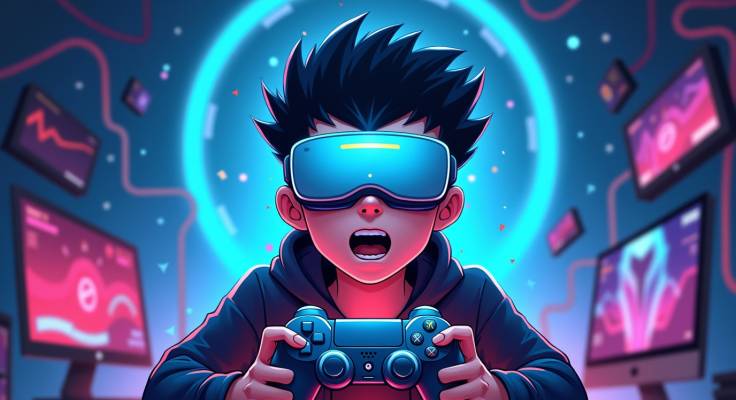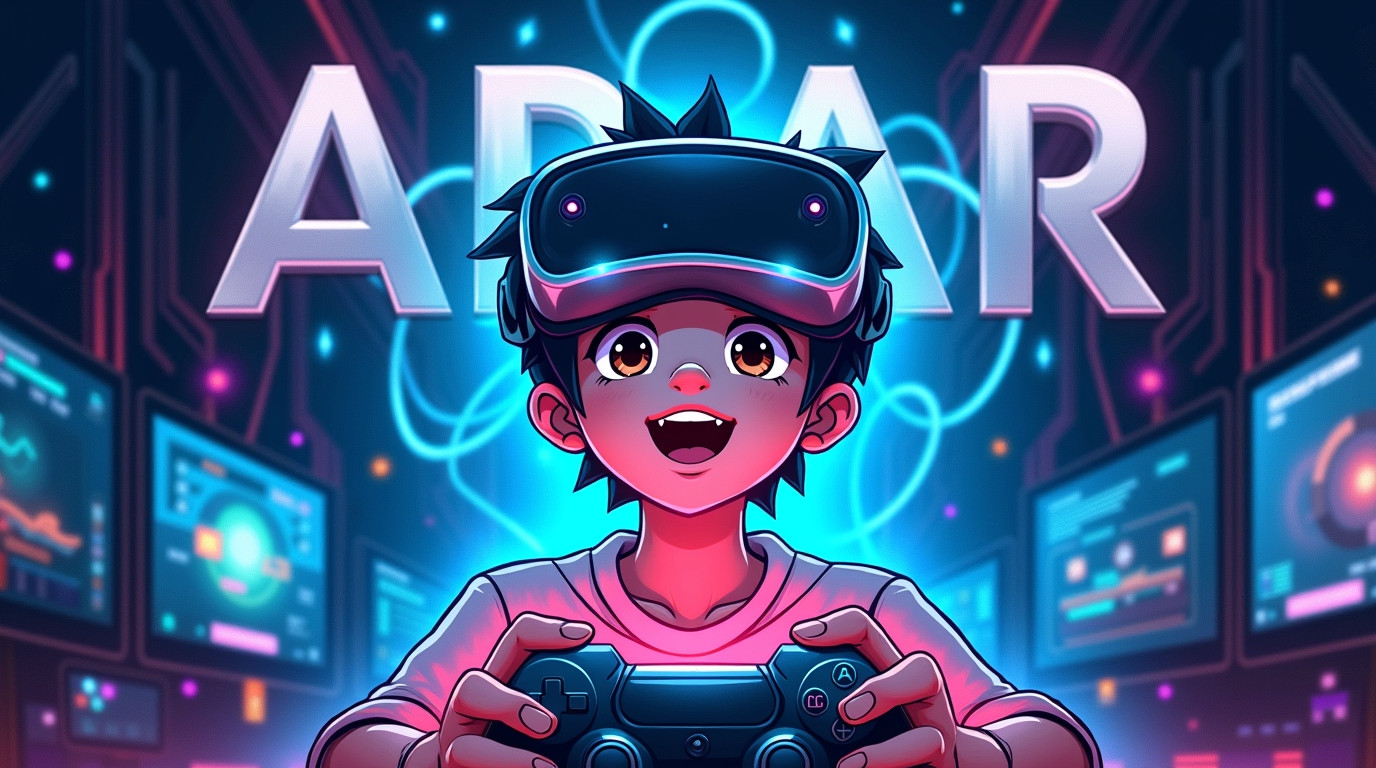The Transformative Power of Augmented Reality in Gaming
- Landon White
- 15 Jan, 25

Augmented Reality (AR) is rapidly reshaping the gaming industry, offering players immersive experiences that blend the digital and physical worlds. This technology has opened new avenues for game developers and players alike, creating a dynamic and interactive environment that was once the realm of science fiction. In this article, we explore the profound impact of AR on gaming, examining its benefits, challenges, and future potential.
The Rise of Augmented Reality in Gaming
Augmented Reality has gained significant traction in the gaming industry over the past decade. Unlike Virtual Reality (VR), which creates a completely digital environment, AR overlays digital elements onto the real world, enhancing the player's perception of their surroundings. This unique capability has made AR a popular choice for game developers looking to create engaging and interactive experiences.
One of the most notable examples of AR in gaming is Pokémon GO, which took the world by storm in 2016. By allowing players to catch virtual creatures in real-world locations, the game demonstrated the potential of AR to create a new kind of gaming experience. Since then, numerous other games have adopted AR technology, further solidifying its place in the industry.
Enhancing Player Engagement
AR technology has the potential to significantly enhance player engagement by creating more immersive and interactive experiences. By integrating digital elements into the real world, AR games encourage players to explore their surroundings and interact with their environment in new ways. This level of engagement can lead to increased player satisfaction and longer play sessions.
Moreover, AR games often incorporate social elements, allowing players to collaborate or compete with others in real-time. This social interaction can further enhance the gaming experience, fostering a sense of community and shared adventure among players. As a result, AR games have the potential to attract a diverse audience, from casual gamers to hardcore enthusiasts.
Challenges in AR Game Development
Despite its potential, developing AR games presents several challenges. One of the primary obstacles is the need for advanced hardware and software capabilities. AR games require devices with powerful processors, high-quality cameras, and precise sensors to accurately overlay digital elements onto the real world. This can limit the accessibility of AR games to players with the latest technology.
Additionally, creating a seamless AR experience requires careful consideration of user interface design and interaction mechanics. Developers must ensure that digital elements are intuitive and easy to interact with, while also maintaining a balance between the virtual and real worlds. This can be a complex and time-consuming process, requiring a deep understanding of both game design and AR technology.
Innovative Game Mechanics
AR technology has enabled the development of innovative game mechanics that were previously impossible. By integrating digital elements into the real world, developers can create unique gameplay experiences that challenge players in new and exciting ways. For example, AR games can incorporate location-based challenges, requiring players to physically move to different locations to progress in the game.
Furthermore, AR games can utilize real-world objects and environments as part of the gameplay. This can lead to creative and unexpected interactions, as players use their surroundings to solve puzzles or overcome obstacles. These innovative mechanics not only enhance the gaming experience but also encourage players to think creatively and explore their environment.
Educational Opportunities in AR Gaming
Beyond entertainment, AR gaming offers significant educational opportunities. By overlaying educational content onto the real world, AR games can create engaging and interactive learning experiences. This approach can be particularly effective for subjects that benefit from hands-on exploration, such as science, history, and geography.
For example, AR games can allow players to explore historical sites or natural environments, providing context and information in an engaging and interactive manner. This can enhance the learning experience, making it more memorable and impactful. As a result, AR gaming has the potential to revolutionize education, offering new ways to engage and inspire learners of all ages.
Augmented Reality and Social Interaction

AR gaming has the potential to enhance social interaction by encouraging players to collaborate and compete in real-world environments. Many AR games incorporate multiplayer elements, allowing players to team up with friends or compete against others in real-time. This social aspect can create a sense of community and shared adventure, enhancing the overall gaming experience.
Moreover, AR games often encourage players to explore their surroundings, leading to spontaneous social interactions with other players. This can foster a sense of camaraderie and connection, as players share their experiences and discoveries. As a result, AR gaming has the potential to bring people together, creating new opportunities for social interaction and collaboration.
The Future of AR in Gaming
The future of AR in gaming looks promising, with continued advancements in technology and increasing interest from both developers and players. As AR technology becomes more accessible and affordable, we can expect to see a wider range of games and experiences that leverage its unique capabilities. This could lead to new genres and gameplay mechanics, further expanding the possibilities of AR gaming.
Additionally, the integration of AR with other emerging technologies, such as artificial intelligence and machine learning, could lead to even more sophisticated and immersive experiences. These advancements could enable more personalized and adaptive gameplay, creating experiences that are tailored to individual players. As a result, AR gaming is poised to become an increasingly important part of the gaming landscape.
Impact on the Gaming Industry
The rise of AR gaming has had a significant impact on the gaming industry, driving innovation and competition among developers. As more companies invest in AR technology, we can expect to see a greater diversity of games and experiences that push the boundaries of what is possible. This competition can lead to higher quality games and more engaging experiences for players.
Furthermore, the success of AR games has demonstrated the potential for new business models and revenue streams. For example, location-based advertising and in-game purchases can provide additional revenue opportunities for developers. As a result, AR gaming has the potential to reshape the industry, creating new opportunities for growth and innovation.
Conclusion: Embracing the AR Revolution
Augmented Reality is transforming the gaming industry, offering new possibilities for immersive and interactive experiences. From enhancing player engagement to creating innovative game mechanics, AR has the potential to revolutionize the way we play and interact with games. As technology continues to advance, we can expect to see even more exciting developments in the world of AR gaming.
For players and developers alike, embracing the AR revolution means exploring new opportunities and pushing the boundaries of what is possible. By harnessing the power of AR, we can create games that are not only entertaining but also educational and socially engaging. As we look to the future, the potential of AR in gaming is limited only by our imagination.













